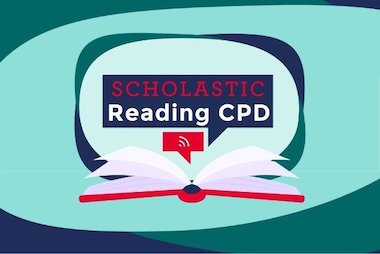Mindfulness – what is it and how does it work?
Schools that say they educate the whole child ecosystem might be kidding themselves if they don’t take care of hand, heart and mind.
The whole child approach is an educational perspective that works to ensure each child is healthy, safe, engaged, supported and challenged. Working with students in a holistic capacity understanding children are more than academics, they are also artistic, physical, moral, social beings.
Teaching children how to think is the bread and butter of teachers but this extends beyond metacognition to developing ‘habits of mind’. These include self-regulation, executive function, intrapersonal awareness and interpersonal skills, a growth mindset, and a sense of agency that supports resilience and perseverance.
When we ask children to ‘pay attention’, we might assume that they can just flick a switch and focus but this is seldom the case. Children need to be taught how to pay attention and the practice of mindfulness needs to be installed like a computer program so they have strategies to do this.
Teaching mindfulness is now a common practice in schools because it is seen as benefiting children in their emotional, social and academic development and it is often used as a way of boosting their well-being and resilience. It’s no longer the stuff of yoga classes and corporate retreats.
When mindfulness is part and parcel of school life and embedded into its ethos, the effects on the wider wellbeing in schools agenda can be enhanced. It helps children focus their thinking and manage their emotions, which can enhance their decision-making, work, relationships and ability to deal with conflict and challenging situations.
Just as children need reading, writing, and maths interventions, they also need to learn how to manage their thoughts, feelings, and behaviours so mindfulness is now used as an intervention strategy to help protect children’s mental health.
h3. But what is mindfulness and does it work?
Mindfulness as a concept has been around for at least 4,000 years yet there is no singular definition for it but rather a variety of definitions throughout the literature that share similar ideas.
It might be easier to say what mindfulness isn’t. Mindfulness isn’t sitting cross legged, fingers pinched, eyes closed and chanting, “Oommmm Oommm”.
Mindfulness can be defined as a meta-mindset and the state of active, open attention to the present whilst accepting our feelings, thoughts and bodily sensations. It is emotional self-management that goes beyond the stereotype. It is a way of being in the present moment, to pause and notice what is happening around and inside of us, so we can choose our behaviour.
In typical mindfulness lessons, children might be taught to think of disturbing thoughts as “buses” that will move away. They might also learn the 7/11 exercise, breathing in for seven seconds and exhaling for 11 seconds, to reduce anxiety.
Mindfulness expert and headteacher Tammie Prince shares her top tips to help teachers implement mindfulness in the classroom and these include the following simple cost-free strategies:
h3. 1. Breathe!
Deep breathing is nature’s way of relaxing the brain and the body. You can ‘trick’ the brain with controlled deep breathing. Get your children to inhale for the count of five. Hold the breath for a second, and then slowly exhale for a count of eight. Repeat ten times, or until calm.
2. Mindful doodling
Children are usually told not to doodle. Explain to them that this doodling is special and will help them to remember what they’ve been taught during the day. It relaxes the mind, and allows the learning to make connections in the brain. It will also help if you play relaxing meditation music in the background.
3. Mindful gratitude
Throughout the day, get the children to stop, take three mindful breaths, and silently write down one thing they are thankful for, on a special ‘Gratitude List’. By the end of the day, the list will be long and filled with happy thoughts. Send it home with the pupils to share with their families.
4. Worry Stones
This is a ‘focus object’ that can allow children to release their worries and connect with their inner mindfulness of calm and peace. Have a collection of smooth stones to hand. When the child starts to become anxious, have them rub the stone, while focusing on the feel of the stone, and taking deep belly breaths.
5. STOP!
This is a ten second mindfulness idea. When the class is getting frustrated, wriggly or overwhelmed, use the acronym STOP to resettle them.
- S = Stop what you are doing
- T = Take a deep breath
- O = Observe what is happening around you
- P = Proceed
6. DIY
As teachers we need to be good role models and develop our own mindfulness too so children follow our lead because “Children that have access to calm, mindful adults are more likely to be calm, mindful children.”
By integrating mindfulness into the school day we can equip children with lifelong skills that support their current and future mental health and well-being.
Do we need mindfulness?
For general happiness and well-being, yes!
A study by the Varkey Foundation found that British children were among the unhappiest in the developed world, behind only Japan, with school and money cited as the biggest causes of anxiety.
Far from being la-la land and psychobabble, mindfulness is being treated seriously as a healthy and significant well-being and mental health intervention strategy.
Mindful practices found in research include mindful breathing, mindful movement, mindful listening, and mindful eating and Paulsen says that mindfulness can be implemented in classrooms in simple yet effective ways that will provide benefits to students.
Many mindfulness activities are incredibly simplistic and require little to no materials.
John Dabell is a writer and educator with over 20 years experience in the classroom, as an OfSTED inspector, project manager, writer and editor. He has written many educational books and children’s books.
Browse related resources
Similar Posts
-

Alternative ways to keep children reading all year round!
Time to bring some literacy-themed fun into your classroom!
-

Reading for Remembrance
In this guest post, Sophie Lawes, Education Officer at the Royal British Legion reflects on how fiction can be used to support your teaching of remembrance.
-

Join us for a new series of Reading CPD workshops this autumn
Join us for a new programme of virtual CPD workshops to support your English curriculum. Hosted by a team of leading literacy experts, the live workshops will take place on Wednesdays at 3.45pm throughout the 2021-2022…
